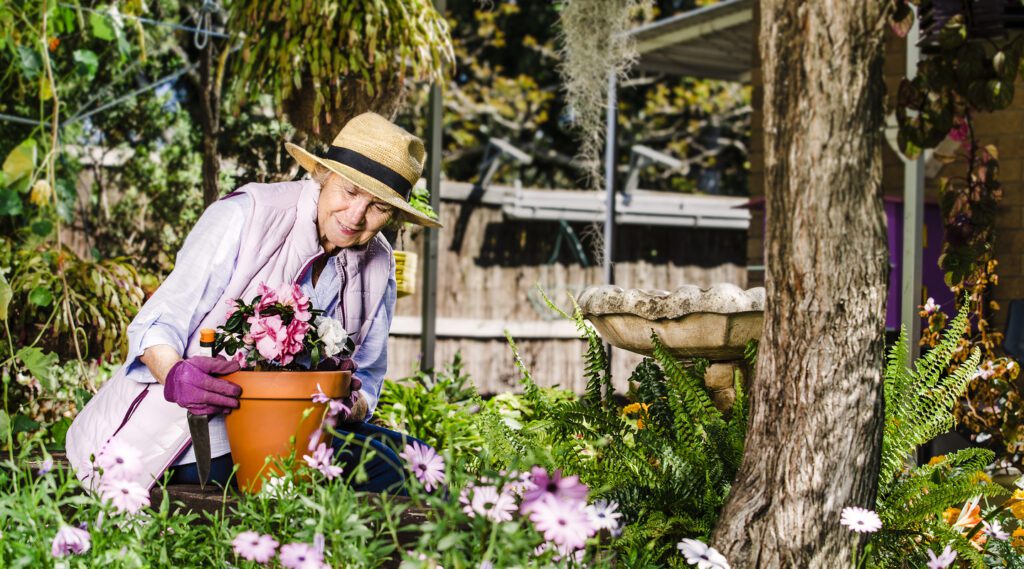23 October 2024
5 Steps To Entering Retirement Living

Making the choice to enter a retirement village is a big decision. It is a time filled with lots of change which can be exciting but can also be emotional. Read our step by step guide to help you navigate your retirement living journey.
Step 1: Develop a retirement wishlist
Congratulations, you are ready to start the exciting journey of retirement. Entering the retirement phase marks the start of your next chapter, a time for you where you can do the things you love and try the things you always wanted to do.
The first step on your retirement journey is to decide where you would like to retire. Is there somewhere that you have always wanted to live? Are you looking for a sea change or tree change? City or country style living? Would you like to live close to family?
It’s a good idea to put together a retirement wishlist to help you narrow down all the must-haves and nice-to-haves you are looking for in your new home.
Step 2: Shop around
Retirement living offers many benefits for retirees, including secure low maintenance living, social activities, communal facilities and the freedom to remain independent as needs change.
There are many different retirement village operators across Queensland and each operate different schemes. Some are for-profit and some are not-for-profit, or church based organisations. Some have co-located aged care on site and others do not.
There are also a range of dwelling options available such as apartments, duplexes and freestanding villas. It’s a great idea to talk to your family and friends about moving into a retirement village. They can offer wonderful support during the research phase.
It might be a good idea to give your retirement living wishlist to a trusted family member or friend and they can help search for providers and pull together a list of suitable villages to visit. It’s also nice if a loved one accompany you on village tours as you meet residents and the manager.

Step 3: Understand costs
It’s important to remember that buying into a retirement village is not the same as buying an investment property. It is an investment in your lifestyle rather than a real estate investment. It is also not the same as owning your own home or renting.
There are a few different costs you will need to consider when entering and exiting a retirement village. At this stage of the process, it is a good idea to seek advice from a financial advisor.
If possible, try to find a financial advisor that specialises in retirement. They will be able to assess your financial position and provide advice on the best course of action for you so you can get the most out of your retirement. They will also be able to advise on the costs of entering a retirement village, how much you are looking to pay and whether any of your existing government payments will be affected.
Deposit
Similar to a real estate transaction, you will need to pay a deposit before moving into a retirement village to secure a particular property. You will need to check with the village about how long they are able to hold the property for you. If you change your mind during this time frame, your deposit will be refunded to you. It is important to check with the village whether a cooling off period applies and if they will apply an administration fee for refunding the deposit.
Purchase price (ingoing contribution)
Residents pay an Ingoing Contribution (purchase price) for a long-term Licence to Reside in the unit. Under this arrangement, no stamp duty is payable.
General services charge
A weekly or monthly fee to cover the shared facilities and services offered at the village, including garden upkeep, staff costs, building and public liability insurance, cleaning and lighting of communal areas.
Maintenance reserve fee
The Maintenance Reserve Fee covers longer-term maintenance and repairs to the building and your unit.
Exit, or deferred management fees (DMF)
An Exit Fee (sometimes called a Deferred Management Fee) is accrued while you reside in your apartment and becomes payable when you leave. The Exit Fee is based on a percentage of the Ingoing Contribution (the cost of the Licence to Reside). The fee is calculated on a pro-rata daily basis.
Payment options
Some retirement village operators also offer different payment options. At Lutheran Services, we offer a flexible pricing model called youfirst. Youfirst gives you the option to pay less when you move in and defer some of the cost of your new home until it’s time to re-sell. You get to keep more savings in the bank and continue doing the things you love.

Step 4: Paperwork and legal advice
Like with buying a house or applying for rental accommodation, entering a retirement village also has it’s fair share of paperwork. Some of the key documents include:
- Village Comparison Document (VCD)
- Prospective Costs Document (PCD)
- Residence Contract
- Entry Condition Report
By law, a resident must have a copy of their residence contract, VCD, PCD, village by-laws and any other documents required, for at least 21 days before they enter into the residence contract with the provider. It is important that you seek legal advice during this time before entering into the residence contract. If possible, try and find a solicitor that specialises in retirement and or aged care matters.
They will be able to assist you with everything you need to know and will guide you about what would be best for your circumstances. It is also a good idea to discuss any questions you have, with the village operator before entering into an agreement.
Once you are happy with the terms of the PCD and have signed the residence contract, you will be ready to move in to your new home.
Step 5: Moving into your new home
Congratulations, you are ready to move into your new home! Moving into a retirement village is an exciting time. Enjoy the process of downsizing and living in a home where there’s nothing to worry about!
To find out more about Retirement Living at Lutheran Services, click here or call us today on 1800 960 433.
Retirement Living


